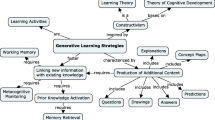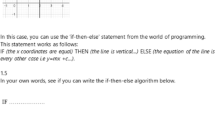Abstract
This commentary adopts a broad perspective in considering the contributions of papers from cross- and interdisciplinary fields of mathematics education, psychology, child development and neuroscience. The discussion aims to complement the commentary by Dindyal, focused on background research on geometry and implications for pedagogy and curricula. Spatial reasoning is considered as a common underlying theme salient to most of the papers in this issue. The fundamental role of spatial ability or visual thinking skills in young children is traced through the various theoretical approaches of studies ranging from concepts such as perspective taking, symmetry, and two- and three-dimensional shape, to the role of technological tools in mapping and location. Intervention studies to promote early spatial reasoning also provide insight into effective transformative practices. New questions are raised about the crucial development of spatial reasoning in Science, Technology, Engineering and Mathematics (STEM) education. The commentary suggests the need for a more strategic research agenda that aims to coordinate the key questions and methodologies that investigate what may seem common problems.
Similar content being viewed by others
Notes
The Spatial Reasoning Study Group (SRSG) is a group of 20 researchers across education, mathematics, psychology, cognitive science and network analysis.
References
Bartolini-Bussi, M., & Baccaglini-Frank, A. (2015). Geometry in early years: sowing seeds for a mathematical definition of squares and rectangles. ZDM Mathematics Education, 47(3). doi:10.1007/s11858-014-0636-5 (this issue).
Battista, M. C. (1999). Spatial structuring in geometric reasoning. Teaching Students Mathematics, 6, 171–177.
Battista, M. C., Clements, D. H., Arnoff, J., Battista, K., & Borrow, C. (1998). Students’ spatial structuring of 2D arrays of squares. Journal for Research in Mathematics Education, 29, 503–532.
Bishop, A. J. (2008). Spatial abilities and mathematics education—a review. In P. Clarkson & N. Presmeg (Eds.), Critical issues in mathematics education. New York: Springer.
Bruce, C. & Hawes, Z. (2015). The role of 2D and 3D mental rotations in mathematics for young children: what is it? Why does it matter? And what can we do about it? ZDM Mathematics Education, 47(3). doi:10.1007/s11858-014-0637-4 (this issue).
Butterworth, B., Varma, S., & Laurillard, D. (2011). Dyscalculia: from brain to education. Science 27, 332 (6033), 1049–1053.
Casey, B. M., Andrews, N., Schincler, H., Kersh, J. E., Samper, A., & Copley, J. (2008). The development of spatial skills through interventions involving block building activities. Cognition and Instruction, 26(3), 269–309.
Clements, D. H. (2004). Geometric and spatial thinking in early childhood education. In D. H. Clements, J. Sarama, & A. M. Di Biase (Eds.), Engaging young children in mathematics: standards for early childhood mathematics education (pp. 267–298). Mahwah: Lawrence Erlbaum.
Clements, D. H., & Sarama, J. (2011). Early childhood teacher education: the case of geometry. Journal of Mathematics Teacher Education, 14(2), 133–148.
Davis, B. (Ed.). (2015). Spatial reasoning in the early years: principles, assertions, and speculations. New York: Routledge.
Dehaene, S. (2009). Reading in the brain: the new science of how we read. New York: Penguin.
Devlin, K. (2012). Introduction to mathematical thinking. Palo Alto: Keith Devlin.
Dindyal, J. (2015). Geometry in the early years. ZDM Mathematics Education, 47(3) (this issue).
Freudenthal, H. (1971). Geometry between the devil and the deep sea. Educational Studies in Mathematics, 3, 413–435.
Grandin, T. (2009). Thinking in pictures. London: Bloomsbury.
Hallowell, D., Okamoto, Y., Romo, L. & LaJoy, J. (2015). First-Grader’s spatial mathematical reasoning about plane and solid shapes and their representations. ZDM Mathematics Education, 47(3). doi:10.1007/s11858-015-0664-9 (this issue).
Hawes, Z., Tepylo, D., & Moss, J. (2015). Developing spatial reasoning. In B. Davis (Ed.), Spatial reasoning in the early years (pp. 29–44). New York: Routledge.
Kaur, H. (2015). Two aspects of young children’s thinking about different types of dynamic triangles: prototypicality and inclusion. ZDM Mathematics Education, 47(3). doi:10.1007/s11858-014-0658-z (this issue).
Kotsopoulos, D., Cordy, M. & Langemeyer, M. (2015). Children’s understanding of large-scale mapping tasks: an analysis of talk, drawings, and gesture. ZDM Mathematics Education, 47(3). doi:10.1007/s11858-014-0661-4 (this issue).
Lehrer, R., & Chazan, D. (1998). Designing learning environments for developing understanding of geometry and space. Erlbaum: Lawrence.
Lehrer, R., Slovin, H., Dougherty, B., & Zbiek, R. (2014). Developing essential understanding of geometry and measurement for teaching mathematics in grades 3–5. Reston: National Council of Teachers of Mathematics.
Mamolo, A., Ruttenberg-Rozen, R., & Whiteley, W. (2015). Developing a network of and for geometric reasoning. ZDM Mathematics Education, 47(3). doi:10.1007/s11858-014-0654-3 (this issue).
Moss, J., Hawes, Z., Naqvi, S. & Caswell, B. (2015). Adapting Japanese Lesson Study to enhance the teaching and learning of geometry and spatial reasoning in early years classrooms: a case study. ZDM Mathematics Education, 47(3). doi:10.1007/s11858-015-0679-2 (this issue).
Mulligan, J. T., & Mitchelmore, M. C. (2013). Early awareness of mathematical pattern and structure. In L. D. English & J. T. Mulligan (Eds.), Reconceptualizing early mathematics learning (pp. 29–45). New York: Springer.
Mulligan, J. T., & Woolcott, G. (2015). What lies beneath? Conceptual connectivity in whole number arithmetic. In. X. Sun, B. Kaur, J. Novotná (Eds.), Proceedings of the International Commission of Mathematical Instruction (ICMI) Study Group 23 conference, University of Macau, 2–8 June 2015. Macau: ICMI Organising Committee (in press).
Newcombe, N. S. (2010). Picture this: increasing math and science learning by improving spatial thinking. American Educator, 34(2), 29–43.
Ng, O. & Sinclair, N. (2015). Young children reasoning about symmetry in a dynamic geometry environment. ZDM Mathematics Education, 47(3). doi:10.1007/s11858-014-0660-5 (this issue).
Papic, M. M., Mulligan, J. T., & Mitchelmore, M. C. (2011). Assessing the development of preschoolers’ mathematical patterning. Journal for Research in Mathematics Education, 42, 237–268.
Piaget, J., & Inhelder, B. (1956). The child’s conception of space. London: Routledge and Kegan Paul.
Rivera, F. (2010). Visual templates in pattern generalizing activity. Educational Studies in Mathematics, 73(3), 297–328.
Rivera, F. (2011). Toward a visually-oriented school mathematics. Dordrecht: Springer.
Rivera, F., Steinbring, H., & Arcavi, A. (2014). Visualization as an epistemological learning tool (special issue). ZDM—The International Journal on Mathematics Education, 46(1), 79–93.
Sinclair, N. & Bruce, C. (2015). New opportunities in geometry education at the primary school. ZDM Mathematics Education, 47(3). doi:10.1007/s11858-015-0693-4 (this issue).
Sinclair, N., & Bruce (coordinators), C. D. (2014). Research forum: spatial reasoning for young learners. In P. Liljedahl, C. Nicol, S. Oesterle, & D. Allan (Eds.), Proceedings of the joint meeting of PME 38 and PME-NA 36 (Vol. 1, pp. 173–203). Vancouver: PME.
Soury-Lavergne, S. & Maschietto, M. (2015). Articulation of spatial and geometrical knowledge in problem solving with technology at primary school. ZDM Mathematics Education, 47(3). doi:10.1007/s11858-015-0694-3 (this issue).
Tahta, D. (1980). About geometry. For the Learning of Mathematics, 1(1), 2–9.
Thom, J., & McGarvey, L. (2015). The act and artifact of drawing(s): observing geometric thinking with, in, and through children’s drawings. ZDM Mathematics Education, 47(3) (this issue).
Tsamir, P., Tirosh, D., Levenson, E., Barkai, R. & Tabach, M. (2015). Early-years teachers’ concept images and concept definitions: triangles, circles, and cylinders. ZDM Mathematics Education, 47(3). doi:10.1007/s11858-014-0641-8 (this issue).
Uttal, D. H., Meadow, N. G., Tipton, E., Hand, L. L., Alden, A. R., Warren, C., et al. (2013). The malleability of spatial skills: a meta-analysis of training studies. Psychological Bulletin, 139(2), 352–402.
van den Heuvel-Panhuizen, M., Iliade, E., & Robitzsch, A. (2015). Kindergartners’ performance in two types of imaginary perspective-taking. ZDM Mathematics Education, 47(3). doi:10.1007/s11858-015-0677-4 (this issue).
van Hiele, P.M. (1985). The child’s thought and geometry. In D. Geddes & R. Tischler (Eds.), English translation of selected writings of Dina van Hiele-Geldof and Pierre M. van Hiele (pp. 243–252). Brooklyn: Brooklyn College, School of Education (original work published 1959).
van Nes, F., & de Lange, J. (2007). Mathematics education and neurosciences: relating spatial structures to the development of spatial sense and number sense. The Montana Mathematics Enthusiast, 2, 210–229.
Verdine, B. N., Golinkoff, R., Hirsh-Pasek, K., Newcombe, N., Filipowocz, A. T., & Chang, A. (2013). Deconstructiong building bocks: preschoolers’ spatial assembly performance relates to early mathematics skills. Child Development,. doi:10.1111/cdev.12165.
Wai, J., Lubinski, D., & Benbow, C. P. (2009). Spatial ability for STEM domains: aligning over 50 years of cumulative psychological knowledge solidifies its importance. Journal of Educational Psychology, 101(4), 817–835.
Author information
Authors and Affiliations
Corresponding author
Rights and permissions
About this article
Cite this article
Mulligan, J. Looking within and beyond the geometry curriculum: connecting spatial reasoning to mathematics learning. ZDM Mathematics Education 47, 511–517 (2015). https://doi.org/10.1007/s11858-015-0696-1
Accepted:
Published:
Issue Date:
DOI: https://doi.org/10.1007/s11858-015-0696-1




